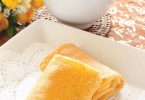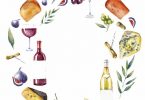This article first appeared in the Nov/Dec 2013 issue of World Gaming magazine.
|
Yum Cha
|
|---|
|
Sands Cotai Central
|
| Open daily 07:00 to 23:00 |
| Telephone +853 8113 7970 |
The Panda headed down to Sands Cotai Central to have some dim sum lunch prepared by one of his favorite chefs. Time for yum cha at “Yum Cha“!
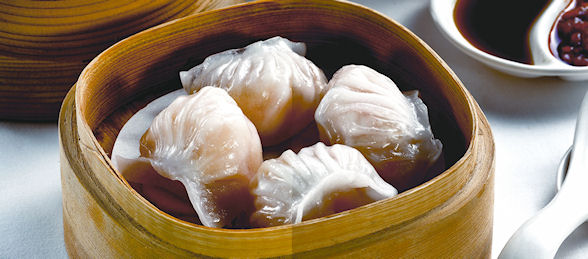
This Panda loves his yum cha. It is without doubt the perfect way to spend a late morning or early afternoon. Plenty of tea and lots and lots of food in a noisy environment where everyone is smiling – this is my kind of dining. I heard a rumor that renowned dim sum chef extraordinaire Chef Ming was packing them in by the truckload with his take on this traditional style of Southern Chinese cooking, so I pulled a few strings and scored myself a seat for Friday brunch.
“Yum cha” literally translates to “drink tea” in Cantonese. “Dim Sum” refers to the food, or to be precise the majority of the food people usually eat when dining yum cha style. The Canton (Guangdong) province in Southern China as well as Macau and Hong Kong are the spiritual homes of yum cha. The meal is a traditional breakfast and eating it all the way into the afternoon is a relatively new thing. In the 1950s and ’60s, many Chinese went to yum cha around 4am or 5am. It was the breakfast of fishermen who would wake in the morning to dim sum and hot tea before they headed out to bring in the morning catch.
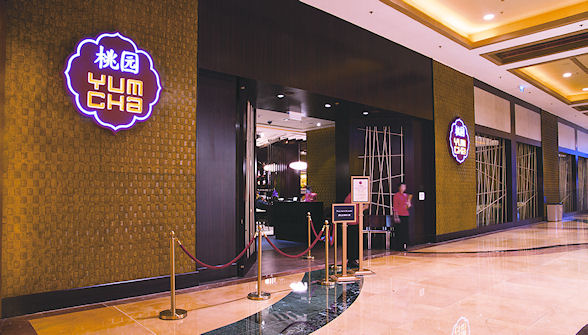
Chef Ming Yeung, more usually known as Chef Ming, started wheeling yum cha trolleys back in Hong Kong many years ago as a 15-year-old. He then made his way into the kitchen where over many years he mastered the art of this style of cuisine. He has had a few stints in mainland China, both in Beijing and down south, as well as Taiwan and was recently recruited to head up the team at Sands Cotai Central. I asked Chef Ming if he thought Hong Kong was the birthplace of yum cha.
“I don’t know if you could call it the birth place but it is certainly the hub where yum cha became so popular. As it grew in popularity it also grew more diverse,” he explained.
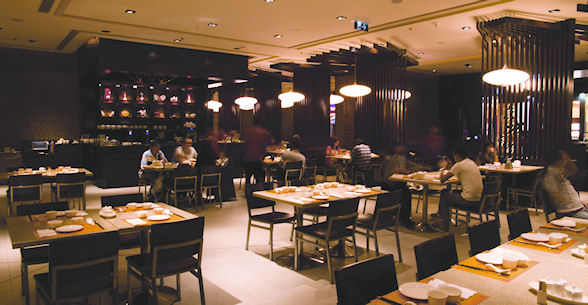
Before I get onto the food, let’s talk about the tea. The tea is as much a part of the meal as the food. I was offered a choice of green, black or white tea. I started with a refreshing green jasmine tea and moved very quickly onto the black. Black tea is favored by the older generations and is known to reduce cholesterol. It is also more bitter in taste and considered to be thicker. The younger generations tend more towards the green and white tea but I was going to take the advice of Chef Ming so it was black Po Li tea all the way for me during the feasting.
Traditional yum cha usually revolves around dumplings, both fried and steamed. Chef Ming is the first to admit yum cha is constantly evolving.
“Of course there are traditional dim sum dishes that will always be served at yum cha but chefs are encouraged to branch out and use different influences in creating their yum cha menus,” he said. “After all yum cha is now an international cuisine as well as being part of South Chinese culture and history.” Chef Ming went on to say that non-Cantonese people often spoil yum cha by drowning it in the wrong sauce.

In the past yum cha was nearly always served on trolleys or trays which would be wheeled or carried around piled high with food. Patrons would point and choose what they wanted. This style still exists today but is slowly being replaced by ordering from a yum cha menu.
“We cook everything to order and customers don’t have to worry about being hit by the trolleys,” Chef Ming joked.
I enjoy the hustle and bustle of the trolley service but I am getting used to ordering from a menu as well. You are given a menu and a pencil and you tick the choices you want to try out. That’s why yum cha is great with a big crowd as the more people there are, the more choices you can indulge in. Chef Ming had already ticked a few boxes for me and was kind enough to trust my judgment with the rest.
To be honest, words could not do justice to the culinary delights which were laid before me. The food was outstanding. I have eaten yum cha in Hong Kong, Macau and extensively in the west and I thought I had seen it at its best. How mistaken I was.

The steamed rice rolls were out of this world. Every time I have had these in the past they were gluggy and usually had only have one kind of meat in them (prawns or pork) but I tried both the meat and vegetable versions here and they were incredible. No wonder Chef Ming says they are his specialty. The secret, he said, is that they must be cooked on the spot every time. The pork buns were fluffy and the BBQ pork inside was perfect with just the right balance of salt and sweet. I also had cucumber in Shanxi black vinegar and some chili wontons served with vinegar. I tried the sweet and sour pork which is not a dim sum dish but is always a “test” dish for me and this version was bursting with perfectly cooked peppers and fresh pineapple. The gluey rice came in little squares and was wrapped in dry seaweed. Chef Ming said this was an example of where he had tinkered with a traditional favorite and I must say this was the best sticky rice I have ever tasted – a million times better than the big gluey chunk you usually get at yum cha.
To finish off, for dessert I tried some traditional egg tarts and some wonderful steamed custard buns with salted egg yolk. Even though this panda was about to burst out of his black and white fur, he was always going to stuff in a couple of sweet treats. Congratulations to Chef Ming and his crew on the food, service and friendly warm atmosphere of their restaurant. Yum Cha should quickly become the yum cha against which all others in Macau are judged.
|
Food
|
9.5/10
|
|
Service
|
8.5/10
|
|
Setting
|
8.0/10
|
|
Tea
|
9.0/10
|
|
Value
|
9.0/10
|
|
Overall
|
17.5/20
|



